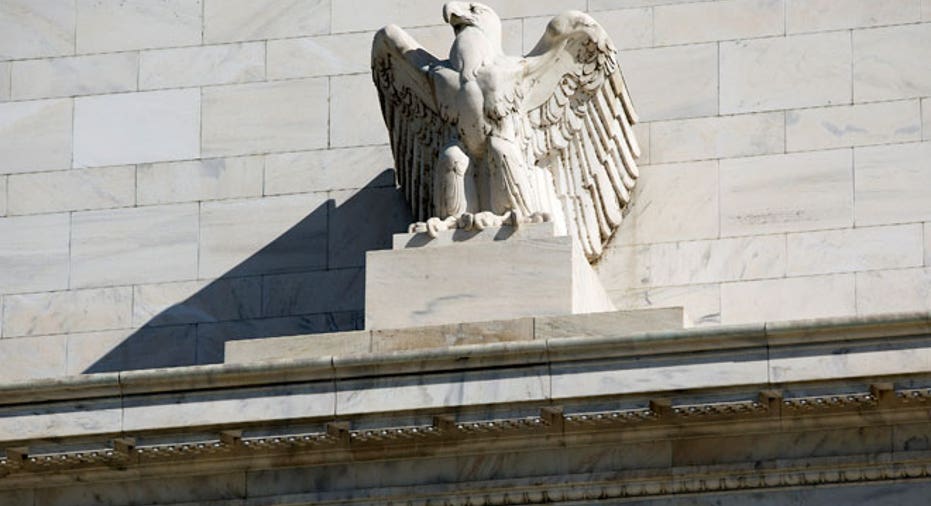Ally Financial Fares Worst in Fed Stress Tests

The Federal Reserve on Thursday said stress test results compiled on 18 of the largest U.S. banks show all but one could easily withstand a hypothetical economic meltdown that was much worse than the recent financial crisis of 2008.
Car loan lender Ally Financial was the only bank that fell below the Fed’s requirement of a minimum Tier 1 common capital ratio of 5% during a severe economic downturn as defined by the Fed.
Ally Financial pushed back, saying it believes the test was "fundamentally flawed."
"While Ally appreciates the Fed’s role in ensuring that financial institutions have adequate capital during stressed situations, using flawed assumptions could have lasting adverse impacts on the economy," the bank said in a statement.
The banks required to undergo the Fed’s stress tests were a who’s who of banks often feared too big to fail, including J.P. Morgan Chase (JPM), Bank of America (BAC), Citigroup (C), Goldman Sachs (NYSE: GS) and Wells Fargo (WFC).
Each of those banks easily floated above the required 5% common capital ratio: J.P. Morgan stood at 6.3%; Bank of America at 6.8%; Citigroup at 8.3%; Goldman Sachs at 5.8%; and Wells Fargo at 7%.
Other notable banks and their hypothetical Tier 1 common capital ratios were Morgan Stanley (NYSE: MS) at 5.7% and American Express (NYSE: AXP) at 11.1%.
The highest common capital ratio was reported by Bank of New York Mellon (NYSE: BK) at 13.2%, and the lowest was Ally Financial, the former GMAC, at 1.5%.
The Fed said in a statement that the banks tested “continued to improve their ability to withstand an extremely adverse hypothetical economic scenario and are collectively in a much stronger capital position than before the financial crisis.”
The hypothetical scenarios conjured up for the stress tests includes a peak unemployment rate of 12.1%, a 50% plunge in stock markets, a more-than 20% decline in housing, and a “sharp market shock” for the largest stock trading firms.
According to the Fed’s hypothetical projections, the 18 bank holding companies included in the stress tests would see losses totaling $462 billion during the nine quarters of the downturn envisioned by the Fed.
The Fed said that under the hypothetical stress scenario the 18 banks that completed the stress tests would see their aggregate tier 1 common capital ratios, which compare high quality capital to risk-weighted assets, fall from an actual 11.1% in the third quarter of 2012 to 7.7% in the fourth quarter of 2014.
The Fed emphasized that its stress scenario estimates “are the outcome of deliberately stringent and conservative assessments under hypothetical, adverse economic conditions and the results are not forecasts or expected outcomes.”
Bank of America and Citigroup were being closely watched by investors because past stress tests have proven problematic.
The Fed has refused requests by both Bank of America and Citigroup to raise their dividends until the bank prove they can pass muster under the newly devised stress tests. Both banks quarterly dividends have been held at one cent per share since dropping to that level during the worst of the financial crisis.
Other banks have been eager to raise their dividends in an effort to prove to regulators, investors and potential clients that their finances are healthy.
A year ago the Fed disclosed which banks were healthy and how much they could raise their dividends all in one announcement. This year the plan is different: the results of the stress tests were released Thursday and dividend plans will be released a week from today.
The Fed switched to the two-step process to allow banks an opportunity to reduce their proposals for increasing dividends and buybacks once they know how they fared in the stress test.
The Fed agreed to conduct stress tests in the wake of the financial crisis five years ago, an emergency that required massive taxpayer-funded bailouts to prevent some banks from collapsing in bankruptcy. At the time, a number of lenders revealed that they didn’t have enough capital to cover their debts in the event of an emergency, a problem that could have potentially led to bank runs and a domino effect of bank failures. The bailouts helped boost capital levels at banks that needed it.
The first stress tests conducted in 2009 under the direction of then Treasury Secretary Timothy Geithner proved successful in instilling confidence in a badly shaken banking sector.



















